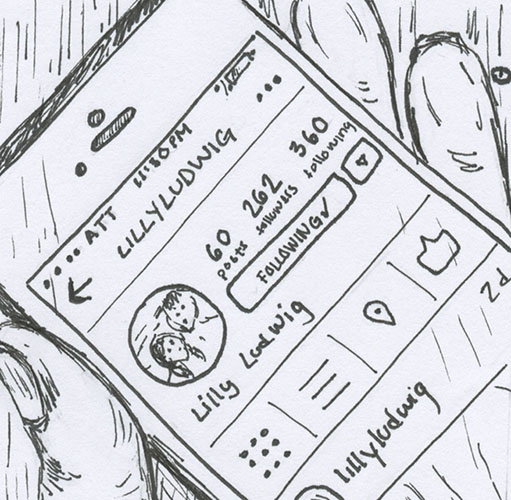Instagram culture curbs genuine self-expression
October 2, 2015
If you’re one of my 262 Instagram followers, you probably noticed something different about the way I was posting this summer. My posts tended to revolve around animals, because truthfully, I spend most of my time with them. It’s not glamorous, but it’s something I love more than anything else in the world.
I did this because I made a pact with myself at the beginning of the summer to start using social media as a tool to actually express who I am. Admit it: most of us use social media as a way to make ourselves appear cooler than we actually are. I just think there’s no reason the pressure to conform should follow teenagers all the way to social media.
Of course there are exceptions, but I’ve found a vast majority of my peers only post when they’re at parties or other social events. This made me think to myself, ‘surely my peers have values beyond just partying’. And the thing is, they do.
However, these values don’t always fit the social norm of social media usage. The reality is that most teenagers are insecure about who they really are, and social media is a great tool to mask a person’s true identity.
Now I think part of being a teenager and part of growing up is learning to overcome this insecurity. It’s very normal for highschoolers, especially underclassmen, to feel that they need to misrepresent themselves just to be comfortable in the school halls. The problem with this, though, is knowing where to draw the line.
Let’s take your average sophomore girl, for example. We’ll name her Emily. Emily loves to hang out with her friends as much as the next girl, but her real passion is coding. Emily spends all afternoon programming a new app, and she snaps a picture to send to her parents. Later, on Saturday night, she goes to a party and takes some pictures with her friends.
On Sunday afternoon, when Emily wants to post on Instagram, she’s definitely more likely to post the pictures of her at the party instead of the new app she designed, because her peers appear to value partying over her real passions.
The problem with this is that by posting the picture of her partying instead of her accomplishment, she tells herself that there’s something wrong with the part of her doesn’t fit the social norm. The more she lies about herself using social media, the more she will begin to actually believe that her real interests and values aren’t worthy of sharing with the world.
Emily is just a fictional example, but she could be any teenager. There is so much pressure for teens to act and be a certain way. As a teenager, it can be really scary to put yourself out there and be an individual. But you can’t spend your whole life pretending to be somebody you’re not. Being an individual is so much more valuable than trying to blend into the crowd.
How do I know this is true? The feedback I’ve gotten from my little animal experiment on Instagram has been really positive. Not only is my family excited that they get to see what I’m up to, but my peers have been extremely encouraging. Ever since coming back to school so many people have told me that they look forward to seeing my Instagram posts and Snapchat stories.
Obviously, becoming recognized on social media was not my intention for this project, but the positive feedback I’ve received has been really encouraging. It’s proof that my peers do value more than just partying, even if sometimes they’re afraid to show it.
It took me three years of high school to fully embrace the part of my life that brings me the most happiness and joy and stop apologizing to people for being the “animal girl”. I encourage you to do the same.



